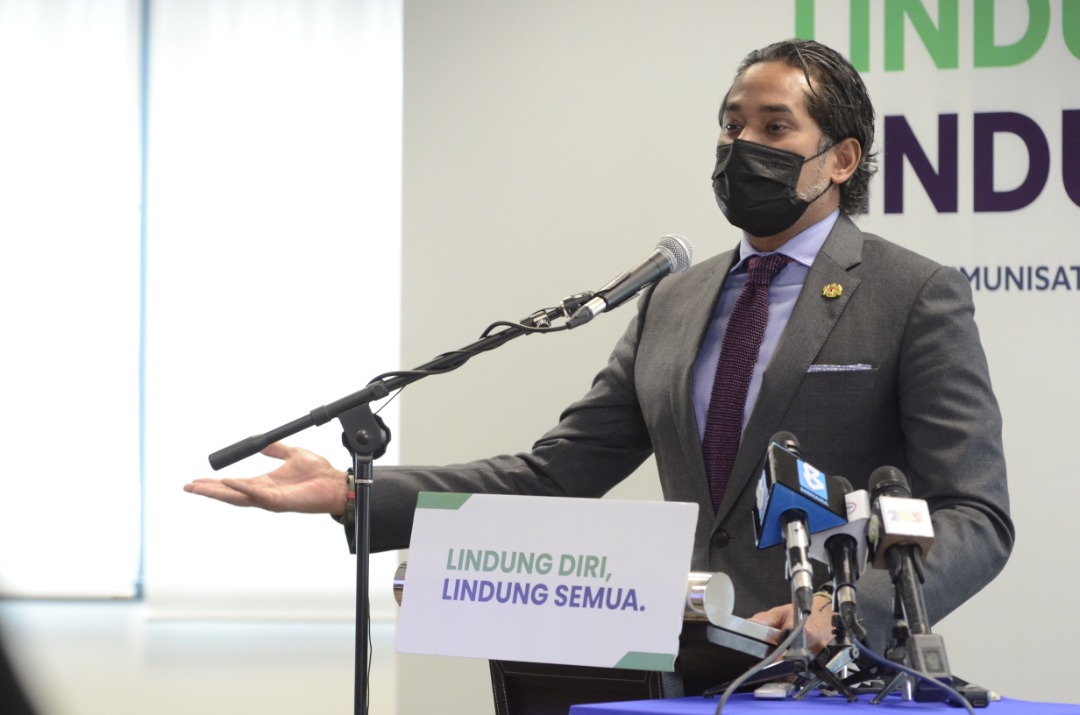KUALA LUMPUR, May 4 — The federal government has launched an analytics tool that it says can predict Covid-19 clusters to enable preemptive measures by premise owners and individuals across public and private spaces.
Science, Technology and Innovation Minister Khairy Jamaluddin said the big data analytics system, known as Hotspot Identification by Dynamic Engagement (HIDE), uses a few variables in its predictive analysis to identify potential coronavirus hotspots ahead of time: the number of positive Covid-19 cases present at a particular premise, exposure time, and ventilation in the premise, among others.
“The big difference between HIDE and what we practised previously is HIDE is predictive, not reactive,” Khairy told a virtual press briefing on HIDE today.
“In the past, contact tracing was done once Patient X identified positive and backward contact tracing takes place. HIDE does both forward and backward contact tracing. By comparing the places in which multiple people tested positive in backward contact tracing, HIDE is able to predict whether or not that particular hotspot that has been identified will be responsible for more transmission in the future.”
HIDE was launched amid a worsening coronavirus epidemic, as hospitals across the Klang Valley, Kelantan, Sarawak, and Johor run out of beds for critical Covid-19 patients. The National Security Council (NSC) announced earlier today a Movement Control Order (MCO) on six districts in Selangor — Hulu Langat, Petaling, Gombak, Klang, Kuala Langat, and Sepang — from May 6 to 17.
Khairy said the government will publish a list of premises identified as potential Covid-19 hotspots under HIDE from May 7 to enable premise owners and the general public to take action to prevent coronavirus clusters in the predicted area. HIDE was developed by the Crisis Preparedness and Response Centre (CPRC) under the Ministry of Health (MOH).
He stressed that premises listed under HIDE may not necessarily be shuttered by authorities, as this depends on risk evaluations by MOH or other agencies.
“If it can be controlled, then the intervention is what I said — testing and entry control — it doesn’t mean it will be closed. But if an interagency team that visits and does risk evaluation and it’s beyond control, then the option to close the premise is available. We won’t wait until an increase of cases. We do backward tracing, forward tracing. We predict and we act.”
He added that premises will be taken off the HIDE list once the necessary interventions are taken and the analytical tool no longer identifies the premise as a potential Covid-19 hotspot.
On May 3, HIDE identified 1,660 potential Covid-19 hotspots nationwide. Some of the large potential hotspots in Kuala Lumpur and Selangor, Khairy said, included shopping malls, food and beverage outlets, supermarkets, bazaars, as well as office premises.
CodeBlue previously reported that about 39 per cent of 314 coronavirus clusters reported from February 22 to April 2 this year originated from factories, the largest segment, followed by community spread (15 per cent), construction sites (9 per cent), educational centres (8 per cent), and shopping areas (7 per cent).
Khairy said today that 90 per cent of Covid-19 transmission in the country happens in 0.2 per cent of premises registered on MySejahtera, the federal government’s Covid-19 management, contact tracing, and vaccination app.
“So, if we take targeted interventions, we only intervene on those premises and don’t do large-scale movement restrictions.”
To enable more accurate HIDE analysis, Khairy instructed business premises to immediately register with MySejahtera to provide QR code scanning for visitors.
“The government encourages residential areas and meeting rooms in buildings to also have their own QR codes. This enables more targeted interventions, rather than just looking at QR codes at the entrances of large buildings,” said Khairy.
“We also require workers’ dormitories to provide QR codes for HIDE analysis.”
When asked about invasion of privacy under HIDE that moots MySejahtera check-ins in residential areas, Khairy said residents do not have to scan the app to enter their own homes, but only when they visit other people’s homes.
“Covid-19 has been transmitted in social gatherings and visits to friends and family. That’s why it’s essential for us to have this. This is why we have MySejahtera to do contact tracing. It’s not an attempt to invade people’s privacy, but to enable us to do contact tracing. HIDE is an improvement of the current contact tracing system.”
He added that MySejahtera has notified more than 800,000 close contacts of positive Covid-19 cases to date, with a 47 per cent success rate in tracing close contacts. Seven per cent of positive Covid-19 cases were identified through the app’s self-assessment function.
Khairy listed five preemptive measures to take once a particular premise is listed by HIDE as a potential Covid-19 hotspot. Owners of HIDE-listed business premises must test their workers. Tighter gatekeeping measures must also be taken, such as using MySejahtera to refuse entry to high-risk individuals, home quarantine breakers, and perhaps close contacts of positive cases.
The third measure is for premise owners to tighten crowd control by ensuring a low number of occupants.
Fourth, management of HIDE-listed premises must self-regulate. If an office, for example, is highlighted as a potential Covid-19 hotspot, employers must instruct their employees to work from home.
Fifth, individuals who visited premises listed under HIDE will be categorised as “casual contacts”. If they have symptoms, they are encouraged to get tested for Covid-19.
Sector-specific interventions under HIDE for listed shopping centres, for example, include “enforced gatekeeping” at all entrances, tightening occupancy limits in confined spaces, and testing of workers.
For offices, interventions include testing, switching to remote work arrangements, and reducing in-person attendance for employees in supervisory and management roles.
Restaurants identified as Covid-19 hotspots may be instructed to limit indoor occupants, restricting dine-in, and testing high-risk contact workers at intervals.








